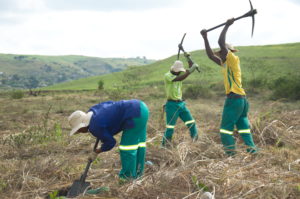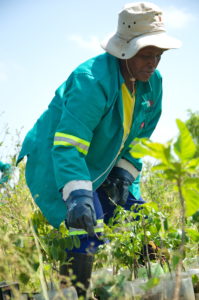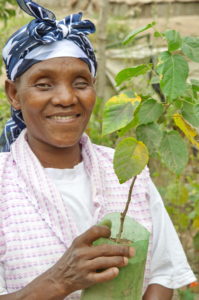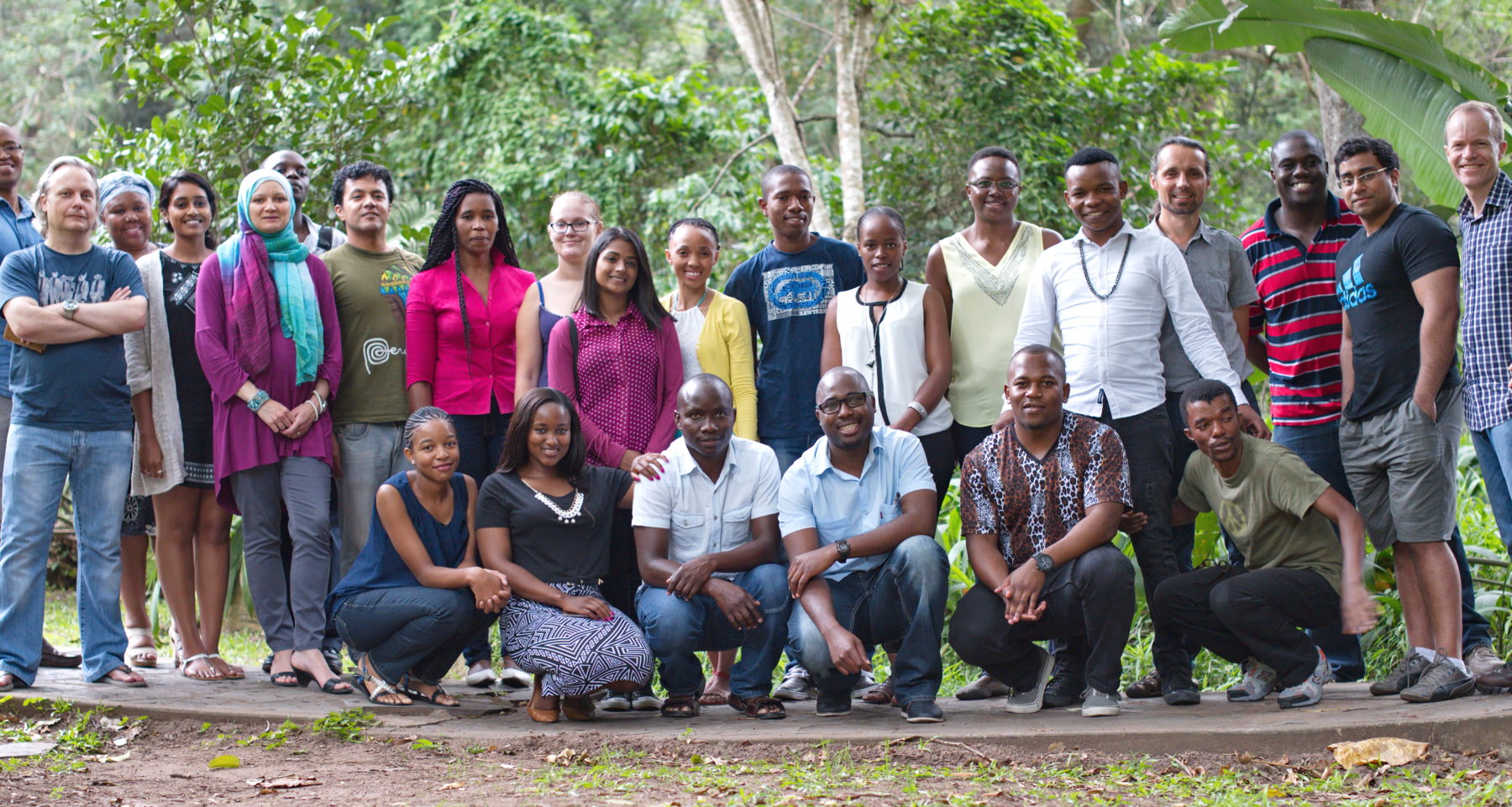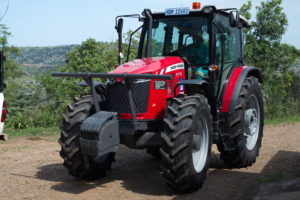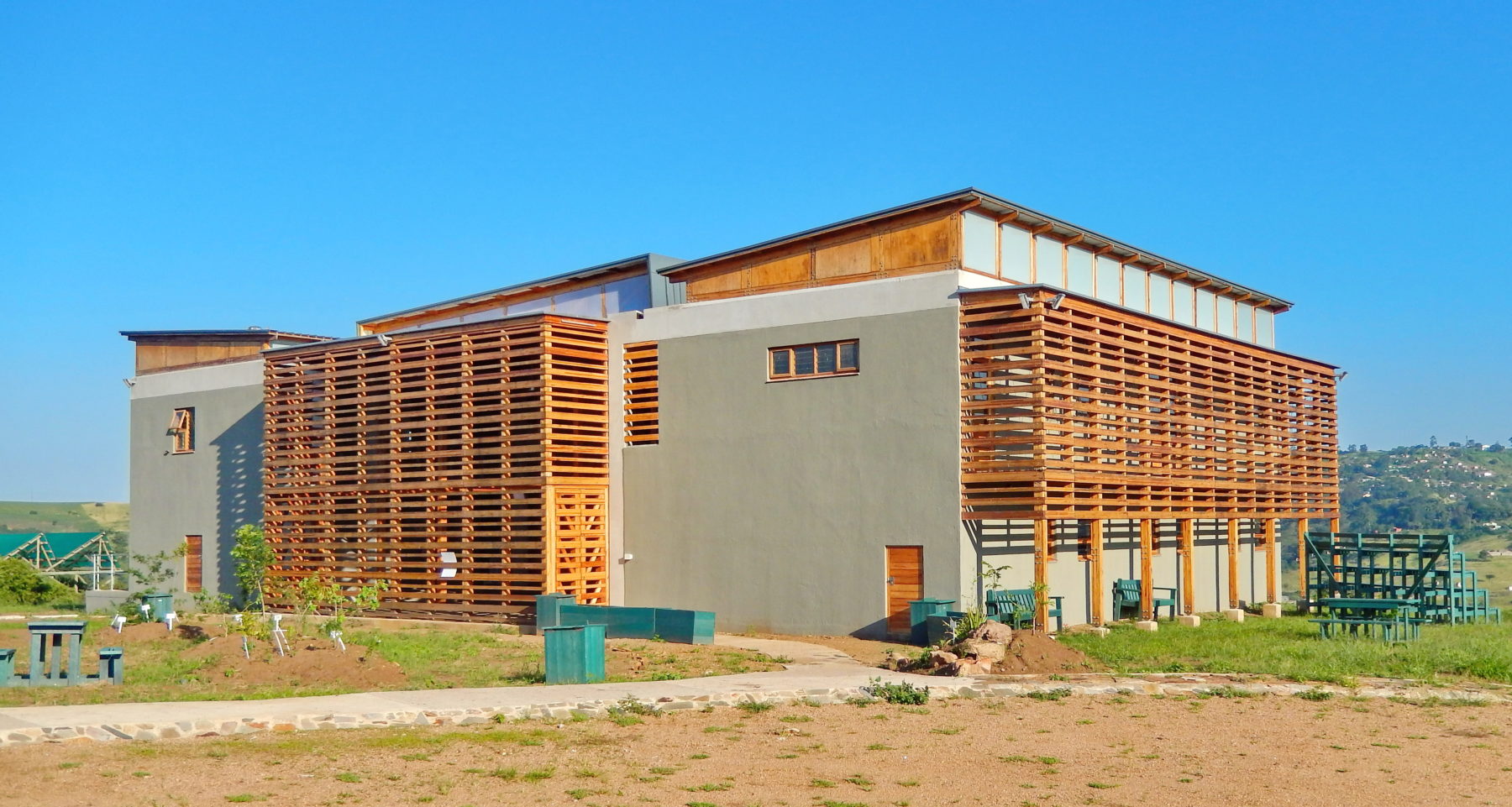Overview
The Buffelsdraai Landfill Site Community Reforestation Project was established in 2008 by eThekwini Municipality’s Environmental Planning and Climate Protection Department. The aim was to alleviate climate change impacts associated with Durban hosting several 2010 FIFATM World Cup matches. A carbon footprint of 307 208 tonnes of carbon dioxide equivalent (tCO2e) was declared for the event, and this reforestation project seeks to offset approximately 42 214 tonnes of carbon over a 20-year period.
One highlight is the role that natural ecosystems play in supporting the livelihoods and resilience of local communities. The project encourages local people to grow indigenous tree seedlings which can be exchanged for food and other goods. Over 700 000 trees have been planted (January 2018).
In 2011, the reforestation project was showcased as one of ten ‘Lighthouse Projects’ by the United Nations Framework Convention on Climate Change’s (UNFCCC) Momentum for Change Initiative. Christiana Figueres, then Executive Secretary, believes that this project demonstrates and exemplifies how local communities can best respond to climate change.
The project was subsequently validated by the Climate, Community and Biodiversity Alliance, and achieved a Gold Standard for ensuring exceptional climate change adaptation benefits as well as for benefits to local communities and biodiversity.
Quick Facts
Project Location:
Buffelsdraai Landfill, Inanda Farm, Iqadi, South Africa, -29.6306033, 30.983548199999973
Geographic Region:
Africa
Country or Territory:
South Africa
Biome:
Temperate Forest
Ecosystem:
Temperate Forest - Deciduous
Area being restored:
800
Project Lead:
EThekwini Municipality
Organization Type:
Governmental Body
Project Partners:
Environmental Planning and Climate Protection Department;
Durban Solid Waste Department;
Wildlands Conservation Trust;
University of KwaZulu Natal;
African Conservation Trust
Location
Project Stage:
Implementation
Start Date:
2008-09
End Date:
2025-12
Primary Causes of Degradation
Agriculture & LivestockDegradation Description
The area was under sugarcane production for c. 100 years, within the 787-hectare buffer zone of the Buffelsdraai Regional Landfill Site. This resulted in severe loss of biodiversity on the site, including in drainage lines. In many areas, wetlands were drained and forest pushed back in order for additional sugarcane to be grown.
Sugarcane production also involved regular deposits of high nutrient fertilizers as well as pesticide and herbicides. Residues of these chemicals have likely remained on the site.
The sugarcane farms did create employment, but anecdotes indicate that labour were often brought from as far as Lesotho. These people were housed on the farms, and it seems that little employment was generated for people from local communities.
The loss of indigenous vegetation on the site, and in the area more broadly has had impacts on the availability of firewood and natural building materials, medicinal plants, and areas for grazing of livestock.
Defining the Reference Ecosystem
The reference ecosystem is primarily based on contemporary reference sites or existing analogues of the pre-degradation ecosystem.Reference Ecosystem Description
The reference ecosystem (Kenneth Stainbank Nature Reserve) is located at a similar altitude, and distance from the ocean. Kenneth Stainbank Nature Reserve also contains a mix of Scarp forest, and Northern Coastal Forest as well as some fragmented grasslands
The Buffelsdraai site appears to have contained a mix of KwaZulu-Natal Hinterland Thornveld, KwaZulu-Natal Sandstone Sourveld, Eastern Valley Bushveld, Scarp forest, and Northern Coastal Forest.
Project Goals
Offset a portion of CO2 emissions (declared as 307,208 tons CO2 equivalent) associated with Durban’s hosting of several 2010 FIFA World CupTM soccer matches, through planting of trees.
Improve the biodiversity of the site, through forest restoration using locally indigenous species.
Deliver appropriate climate change adaptation measures, through improved ecosystem service delivery.
Deliver environmental education benefits to local communities.
Ensure job creation and skills development for local community members.
Monitoring
Monitoring Details:
Periodic monitoring of biodiversity on the site, including trees, avifauna, invertebrates, and mammals.
A periodic Veld Condition Assessment (VCA) aids in the identification of areas to be prioritised for prescribed burns in a particular fire season.
Start date, including baseline data collection:
2011
End Date:
2050
Stakeholders
EThekwini Municipality (project owner, project design, oversight, funding and implementing)
National Department of Environmental Affairs (some funding)
DANIDA (some funding)
Wildlands Conservation Trust (implementation)
Local communities (planting of trees, control of invasive species etc.)
How this project eliminated existing threats to the ecosystem:
On-site fire management is undertaken to minimise the destruction of newly planted trees. Firebreaks are cut and maintained around all planted areas. This work is undertaken by the Municipality’s Fire and Invasive Species Control (FISC) programme, in conjunction with Wildlands, which provides manpower to directly suppress unauthorised wild fires. Fuel loads are reduced through the application of prescribed burns, as well as through continuous control of invasive alien plants (IAPs) on the site. Together, these minimise the occurrence of wildfires. Fire management is largely seen as a protectionist activity, i.e. as a means to protect young trees, physical assets and people within the site. The risk of on-site methane (from the landfill footprint) contributing to fire-related disasters is accounted for by careful planning and management of, or reaction to, on-site fires.
Regular and ongoing control of invasive alien plants (IAPs) is a high priority, as these plants threaten the successful establishment of the forest. IAPs most commonly found on-site include Chromolaena odorata, Lantana camara, Melia azedarach, Solanum mauritianum and Tithonia diversifolia. Wildlands, as part of their planting regime, clear IAPs systematically prior to planting and also through follow-up control. IAPs pose a very high fire risk to the planted areas as they greatly increase biomass fuel loads; and this contributed to the decision to introduce a dedicated fire-control team from the FISC programme
How this project reinstated appropriate physical conditions (e.g. hydrology, substrate)",:
Drained wetlands will be planted up in ways to encourage the functionality of the wetlands to return.
How this project achieved a desirable species composition:
Use of a reference ecosystem to compare species lists and investigate ecosystem functionality
How this project reinstated structural diversity (e.g. strata, faunal food webs, spatial habitat diversity):
Introduction of some species will be considered.
How this project recovered ecosystem functionality (e.g. nutrient cycling, plant-animal interactions, normal stressors):
It is anticipated that such functionality will improve over time
How this project reestablished external exchanges with the surrounding landscape (e.g. migration, gene flow, hydrology):
Some corridors may be protected or added to the project site at a later date.
Activities were undertaken to address any socio-economic aspects of the project:
Socio-economic benefits resulting from the reforestation project have been significant, and include more than 540 employment opportunities generated since the start the project in 2008. Benefits can be categorised into: a) household and b) community benefits (what can be termed multiplier effect). All people employed were from the surrounding communities and were previously unemployed. According to beneficiaries of the project, income gained from the project had significant impacts on their household livelihood. All permanent, temporary and part-time workers are paid wages at the national minimum wage level in the construction sector and beneficiaries have reported higher income than the average income of the whole community.
Ecological Outcomes Achieved
Eliminate existing threats to the ecosystem:
Good progress has been made in minimizing the primary ecosystem threats.
Reinstate appropriate physical conditions",:
Some wetlands on the site have recovered well, and others are in the process of recovering.
Achieve a desirable species composition:
Over 60 locally indigenous tree species have been planted. A variety of shrubs, herbs and climbers have also been planted. This in turn has helped improve bird and butterfly species that are being attracted to the site.
Reinstate structural diversity:
Management of different ecosystem types on the site is underway.
Recover ecosystem functionality:
Not yet assessed in full
Reestablish external exchanges with the surrounding landscape:
Some corridors have been mapped out for inclusion in the broader open space system. It is anticipated that these corridors will assist in gene flow.
Socio-Economic & Community Outcomes Achieved
Economic vitality and local livelihoods:
A study of 320 tree-preneurs indicated that majority (97%) of people traded trees for food (Figure 3), followed by educational expenses such as school fees and stationary (16%) and bicycles (5%). A small number of people reported that they spent their wages on building materials bought locally, or on fees for driving lessons. A comparison of food security levels before and during the initiation of the project showed that people who reported that they “sometimes go hungry the whole day” were reduced from 80% to less than 50%. Furthermore, households that were acquiring food through trading trees increased to 30%. Evidence indicates that people became less reliant on begging for food from relatives and extended families.
Provision of basic necessities such as food, water, timber, fiber, fuel, etc.:
During the past year, the project has expanded its current scope, by assisting individuals and mentoring small businesses, so that trees can be traded on the open market. This will contribute to ongoing socio-economic development in the area, once the project is complete. The Indigenous Trees for Life (ITFL) initiative, as developed by Wildlands Conservation Trust, allows ‘Treepreneurs’ to grow seedlings at their homesteads and then trade these for credits. The credits can then either be swapped for groceries and other items at a nearby supermarket, used to pay for school fees or driving lessons, or to purchase building materials so that they can upgrade their homes. Discussions about further credit exchange options are ongoing, such as the possibility of trading trees for clothes. The project embraces the National Green Economy principles as a means to ensure a sustainable future for nearby communities. This model hopes to learn and then showcase how human well-being and social equity can be improved, while reducing environmental risks and ecological scarcities.
Cultural dimensions such as recreational, aesthetic and/or spiritual:
To date 3,200 learners from 24 local schools, and 60 ward councillors and committee members (from Buffelsdraai, iNanda and Paradise Valley) attended training. Furthermore, 320 ordinary community members attended community site-guides training and environmental training.
Regulation of climate, floods, disease, erosion, water quality, etc.:
A key focus of the project was to restore the forest by also maximising benefits to local communities. Where possible, locals are employed for tasks such as digging holes and planting trees, fighting fires, and patrolling the site for undesirable activities. Research supported through the programme is not limited only to biodiversity and climate change aspects, as a number of postgraduate students have also undertaken studies focusing on community benefits, including knowledge transfer about climate change adaptation and socioeconomic development. The communities’ ongoing involvement aids in supporting, restoring and protecting local ecosystems, thereby providing them with improved ecosystem services.
Has the project had any negative consequences for surrounding communities or given rise to new socio-economic or political challenges?:
Some community members have claimed that they own land within the project site. However, they have not followed the formal land claims procedure. This has resulted in some tensions and challenges.
Key Lessons Learned
On 16 July 2015 the ‘Buffelsdraai Landfill Footprint and Buffer zone Project’ won the “Best Public Service Implemented Programme or Project of the Year” from the KwaZulu-Natal Premier’s Service Excellence Awards (Douwes et al., 2015a).
The project has highlighted the importance of how natural ecosystems support and protect human communities, and the role that human communities can play in supporting, restoring and protecting local ecosystems. Apart from the subsistence contributions, forests support livelihoods through income earning opportunities.
Long-Term Management
EThekwini Municipality, through its Environmental Planning and Climate Protection Department will undertake post-implementation maintenance and monitoring.
Sources and Amounts of Funding
EThekwini Municipality: ZAR 100 000 000
DANIDA ZAR 2 500 000
Department of Environmental Affairs: ZAR 36 000 000
Other Resources
https://en.wikipedia.org/wiki/Buffelsdraai_Landfill_Site_Community_Reforestation_Project
https://www.researchgate.net/project/Buffelsdraai-Community-Reforestation-Programme
Related Research
The University of KwaZulu Natal has been a key partner in this project. To date, 16 postgraduate students have undertaken studies on or linked to the project. Various papers have already been published, and additional research is in the process of being written up. There is long-term monitoring taking place on the site, and a plot-based study is underway to investigate the success of different planting approaches.Primary Contact
Name:
Errol Douwes
Affiliation:
EThekwini Municipality
City:
Durban
State:
Kwa-Zulu Natal


